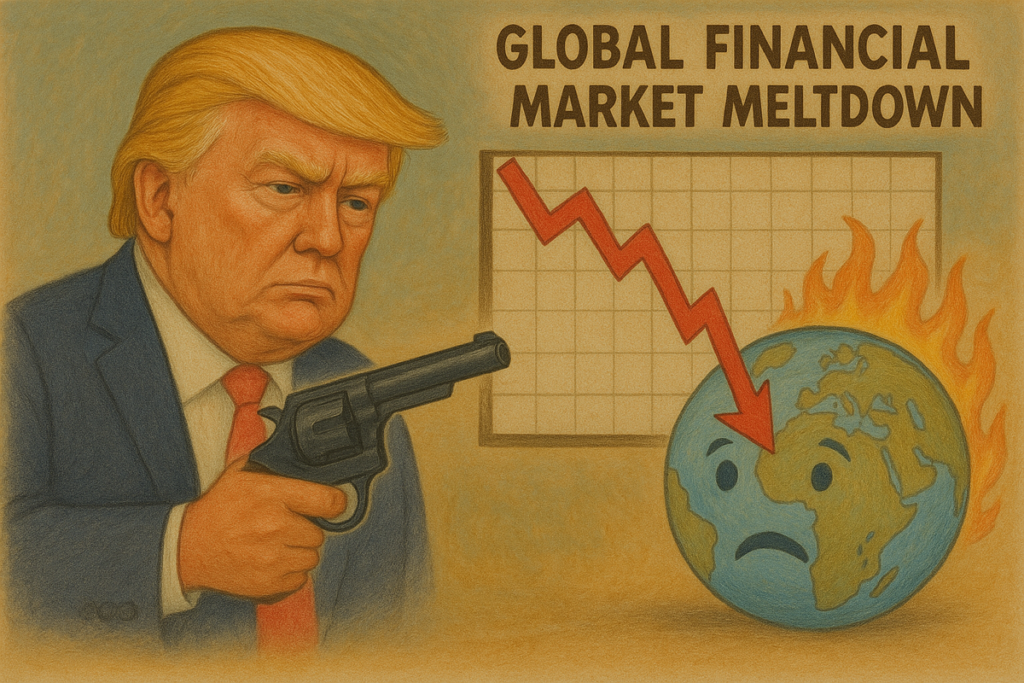Private Markets in a Trade War: Freeze, Flee or Fight?
A Shifting Landscape for Private Markets
With the U.S. reactivating its tariff playbook and global markets reacting in kind, private markets investors face a mix of familiar challenges and new complexities.
Inflation is rising, trade routes are under pressure, and the dollar is wobbling – just in time for an already fragile exit environment.
In this post, we break down what limited partners across the U.S., Europe, and Emerging Markets need to watch. How current dynamics could affect deal flow and distributions, and what smart portfolio management looks like right now.
Whether you’re overallocated and considering the secondary market, or just wondering if you should freeze, flee or fight – this one’s for you.
Four key takeaways
- Deal flow and distributions are slowing, but not disappearing
- Inflation, tariffs, and a shaky dollar mean LPs need to think regionally
- The denominator effect is real – and it’s reshaping allocations
- Secondaries may be the biggest opportunity in plain sight

“Monstrously destructive, incoherent, ill-informed tariffs based on fabrications, imagined wrongs, discredited theories and ignorance of decades of evidence. And the real tragedy is that they will hurt working Americans more than anyone else.”
Justin Wolfers, economics professor at the University of Michigan
Tariffs Take Center Stage
Since April 2, 2025—dubbed “Liberation Day” by President Trump—the U.S. has implemented a sweeping 10% tariff on all imports. Country-specific increases are already underway, with China facing a cumulative tariff rate exceeding 100%.
China’s response has been equally bold, promising to “fight to the end” and slapping retaliatory tariffs on U.S. goods. Markets haven’t taken kindly to this re-escalation, with volatility rising and investor nerves tested once again.
The European Union, while less bombastic in tone, is taking a firm stance of its own. Brussels has offered a “zero-for-zero” industrial tariff deal in hopes of defusing tensions but has simultaneously prepared retaliatory measures, including 25% tariffs on U.S. goods such as poultry, eggs, and luxury items. While the EU remains open to negotiation, it has signaled it won’t wait indefinitely to act.
Welcome Back to the Economic Minefield
A tariff war is never just about trade—it’s about inflation, FX volatility, supply chains, and sentiment. These measures are landing at a time when private markets were already navigating a cautious environment.
For LPs, this likely means fewer exits, lower visibility, and a need to rethink both deployment and pacing strategies.
Deal Flow: From Boom to Meh
Deal flow can be expected to cool. Sellers will hold back amid pricing uncertainty, while GPs struggle with rising financing costs and weaker appetite from strategic and public market buyers.
The result? A slowdown in new deals and likely longer holding periods for existing ones.
Distributions: The Great Slowdown
Distributions, still weak, will likely take another hit. With IPOs and M&A quieter, and GPs extending hold periods, LPs will see cash flows stall further.
Instead of cheques, LPs are receiving continuation vehicles and creative fund extensions. Not ideal, but not the end either.
The Denominator Effect: It’s Back, Baby
As public equity and bond markets decline, private allocations appear to balloon – without any NAV uplift to justify it.
This classic denominator effect will, if it persists, cause many LPs to reassess pacing, delay new fund commitments, or offload assets in the secondary market to stay within policy ranges.
Having passed Q1 but just into Q2, keep an eye on Q2 valuations from both GPs and how LPs respond.
Regional View: Risks and Opportunities by Market
US-Based LPs: Feeling the Heat
The combination of inflation, interest rates, and protectionism will bite hard. Portfolio companies will face cost pressure, and the exit environment will be even more challenging.
But there’s opportunity in the volatility: private credit, reshoring themes, and deep-value secondaries will likely gain traction.
EU-Based LPs: Playing the FX Game
The EU faces a double hit—trade exposure and energy-linked inflation. Add the weakening U.S. dollar, and returns from U.S. funds may get trimmed on the way back home.
Still, for those deploying capital, the FX discount into the U.S. is appealing. European mid-cap deals are also becoming more attractively priced.
Emerging Market LPs: Buffeted but Not Beaten
EMs are caught in the crosshairs of global dislocation—capital outflows, FX risk, inflation—but offer compelling real asset and commodity-linked plays.
Valuations are lower, managers are seasoned from past crises, and long-term demographics remain strong. But selectivity and GP quality matter more than ever.
Freeze, Flee or Fight?
It’s not a one-size-fits-all answer—but most LPs are leaning toward one of three responses:
- Freeze – Pause, reassess pacing models, and take a breath. Particularly relevant for LPs close to allocation caps
- Flee – Exit weaker positions via secondaries, rebalance exposure to lower-volatility strategies, or reduce blind pool commitments
- Fight – Lean into the dislocation: back high-conviction managers, pursue continuation vehicles, and deploy into special sits, infra, and private credit
LPs should carefully but also with some urgency assess which response works best for them, given their peculiarities and in relation to their various asset classes. You don’t want to be the last LP who gets this done and tries to take action, nor do you want to sit passively by.
Which Asset Classes Look Strongest Right Now?
Not all private markets are built to handle this type of storm equally. Here’s a quick read on how different asset classes are likely to perform:
Private Equity – Still Strong Over The Long Run
But likely to face near-term headwinds due to inflation, valuation resets, and slower exits. Mid-market and operationally-focused GPs may outperform.
Private Credit – a Clear Winner
As traditional lenders pull back and capital becomes more expensive, direct lenders, opportunistic credit, and special situations are well positioned to shine.
Real Estate – More of a Mixed Bag
More income-generating assets with inflation-linked leases (e.g. logistics, multifamily) may perform well. But office and retail, especially in urban centers, will remain under pressure.
Infrastructure – resilient and increasingly popular in a high-inflation world
Inflation-linked cash flows, energy transition plays, and digital infrastructure make this a defensive bright spot.
Venture Capital – the most exposed
Valuations are still adjusting and exit markets are tight. GPs with dry powder and a contrarian edge may do well, but overall VC faces a tough short-term outlook.
The biggest opportunity right now? Secondaries.
Forced sellers, stalled pacing, and aged assets mean pricing, even in the face of more competition, is becoming attractive. For LPs with liquidity and patience, there’s real alpha to be captured in both LP-led and GP-led secondary transactions.
Watch for discounts on 2021–2022 vintages, NAV mismatches, and motivated GPs looking for creative liquidity.
Final Thought: Volatility ≠ Doom
This isn’t the first time private markets have faced dislocation, and it won’t be the last.
Yes, the macro picture is murky. But this is also when disciplined capital gets to work. Investors who remain focused, liquid, and opportunistic are well positioned to come out stronger on the other side.
You don’t need to sprint. But standing still isn’t an option either.
I hesitate to say it, but….
Stay illiquid
Kasper
More Insights
Balentic Edge
Sign up to keep up to date with the latest news and updates.
© 2025 Balentic ApS. CVR: 44034255. All rights reserved.
Privacy Policy | Terms of Service
The Balentic website and Orca are, and are expected to continue to be, under development. Consequently, some of the features described in this Overview and/or on the website may not yet be available or may work differently. Some features may furthermore not be available to all users.


